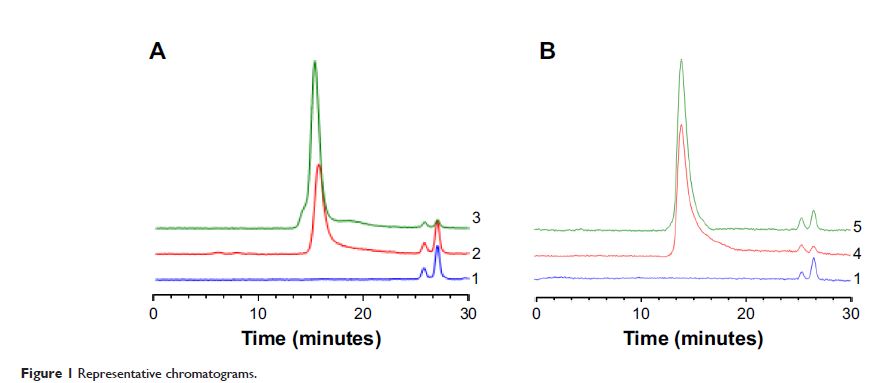108605
论文已发表
注册即可获取德孚的最新动态
IF 收录期刊
- 3.4 Breast Cancer (Dove Med Press)
- 3.2 Clin Epidemiol
- 2.6 Cancer Manag Res
- 2.9 Infect Drug Resist
- 3.7 Clin Interv Aging
- 5.1 Drug Des Dev Ther
- 3.1 Int J Chronic Obstr
- 6.6 Int J Nanomed
- 2.6 Int J Women's Health
- 2.9 Neuropsych Dis Treat
- 2.8 OncoTargets Ther
- 2.0 Patient Prefer Adher
- 2.2 Ther Clin Risk Manag
- 2.5 J Pain Res
- 3.0 Diabet Metab Synd Ob
- 3.2 Psychol Res Behav Ma
- 3.4 Nat Sci Sleep
- 1.8 Pharmgenomics Pers Med
- 2.0 Risk Manag Healthc Policy
- 4.1 J Inflamm Res
- 2.0 Int J Gen Med
- 3.4 J Hepatocell Carcinoma
- 3.0 J Asthma Allergy
- 2.2 Clin Cosmet Investig Dermatol
- 2.4 J Multidiscip Healthc

已发表论文
在心肌梗死和缺血再灌注大鼠中提高单聚乙二醇化麦冬多糖的心脏分布
Authors Yao CX, Shi XL, Lin X, Shen L, Xu DS, Feng Y
Published Date January 2015 Volume 2015:10 Pages 409—418
DOI http://dx.doi.org/10.2147/IJN.S73462
Received 30 August 2014, Accepted 16 October 2014, Published 9 January 2015
Abstract: Although PEGylation plays an important role in drug delivery, knowledge
about the distribution behavior of PEGylated drugs in ischemic myocardia is
rather limited compared to nanoparticles. This work therefore aims to
characterize the targeting behavior of the anti-myocardial ischemic
mono-PEGylated conjugates of Radix Ophiopogonis polysaccharide (ROP) in two
clinically relevant animal models, ie, the myocardial infarction (MI) model and
the ischemia/reperfusion (IR) model. To determine the effect of the molecular
size of conjugates, two representative conjugates (20- and 40-kDa polyethylene
glycol mono-modified ROPs), with hydrodynamic size being approximately and
somewhat beyond 10 nm, respectively, were studied in parallel at three time
points postdose after a method for determining them quantitatively in biosamples
was established. The results showed that the cardiac distribution of the two
conjugates was significantly enhanced in both MI and IR rats due to the
enhanced permeability and retention effect induced by ischemia. In general, the
cardiac targeting efficacy of the conjugates in MI and IR rats was
approximately 2; however, different changing in targeting efficacy with time
was observed between MI and IR rats and also between the conjugates. Although
the enhanced permeability and retention effect-based targeting efficacy for
mono-PEGylated ROPs was not high, they, as dissolved macromolecules, are prone
to diffusion in the cardiac interstitium space, and thus, facilitate the drug
to reach perfusion-deficient and nonperfused areas. These findings are helpful
in choosing the cardiac targeting strategy.
Keywords: heart distribution, myocardial ischemia, polyethylene glycol, Radix Ophiopogonis polysaccharide
Keywords: heart distribution, myocardial ischemia, polyethylene glycol, Radix Ophiopogonis polysaccharide
